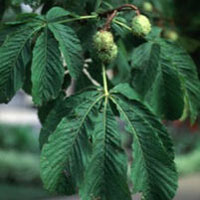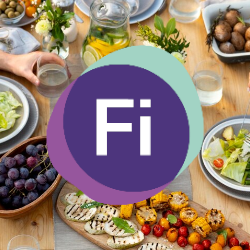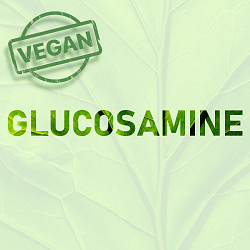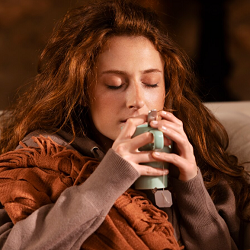Horse Chestnut
 © Steven Foster
© Steven FosterParts Used & Where Grown
The horse chestnut tree is native to Asia and northern Greece, but it is now cultivated in many areas of Europe and North America. The tree produces fruits that are made up of a spiny capsule containing one to three large seeds, known as horse chestnuts. Traditionally, many of the aerial parts of the horse chestnut tree, including the seeds, leaves, and bark, were used in medicinal preparations. Modern extracts of horse chestnut are usually made from the seeds, which are high in the active constituent aescin (also known as escin).
- Reliable and relatively consistent scientific data showing a substantial health benefit.
- Contradictory, insufficient, or preliminary studies suggesting a health benefit or minimal health benefit.
- For an herb, supported by traditional use but minimal or no scientific evidence. For a supplement, little scientific support.
Our proprietary “Star-Rating” system was developed to help you easily understand the amount of scientific support behind each supplement in relation to a specific health condition. While there is no way to predict whether a vitamin, mineral, or herb will successfully treat or prevent associated health conditions, our unique ratings tell you how well these supplements are understood by the medical community, and whether studies have found them to be effective for other people.
For over a decade, our team has combed through thousands of research articles published in reputable journals. To help you make educated decisions, and to better understand controversial or confusing supplements, our medical experts have digested the science into these three easy-to-follow ratings. We hope this provides you with a helpful resource to make informed decisions towards your health and well-being.
This supplement has been used in connection with the following health conditions:
| Used for | Amount | Why |
|---|---|---|
Chronic Venous Insufficiency | Standardised extract providing 50 mg aescin two to three times per day | Horse chestnut is traditionally used for venous problems, and its effectiveness has been backed up by an extensive overview of clinical trials. |
Haemorrhoids | Take a standardised herbal extract providing 90 to 150 mg aescin daily | Horse chestnut extracts have been reported to reduce haemorrhoid symptoms. |
Sprains and Strains | Apply a 2% gel every two hours | Horse chestnut contains a compound called aescin that acts as an anti-inflammatory and reduces oedema (swelling with fluid) following injuries. |
Wound Healing | Apply topically | Horse chestnut contains a compound called aescin that acts as an anti-inflammatory and reduces swelling after trauma, particularly sports injuries, surgery, and head injury. |
Lymphedoema | Refer to label instructions | An ingredient in horse chestnut seed has been shown to effectively reduce post-surgical oedema in preliminary trials. |
Varicose Veins | Refer to label instructions | Horse chestnut seed extract can be taken orally or applied topically treat varicose veins. |
Traditional Use (May Not Be Supported by Scientific Studies)
Horse chestnut leaves have been used by herbalists as a cough remedy and to reduce fevers.1 The leaves were also believed to reduce pain and inflammation of arthritis and rheumatism. In traditional herbal medicine, poultices of the seeds have been used topically to treat skin ulcers and skin cancer. Other uses include the internal and external application for problems of venous circulation, including varicose veins and haemorrhoids.
Copyright © 2024 TraceGains, Inc. All rights reserved.
Learn more about TraceGains, the company.
The information presented by TraceGains is for informational purposes only. It is based on scientific studies (human, animal, or in vitro), clinical experience, or traditional usage as cited in each article. The results reported may not necessarily occur in all individuals. Self-treatment is not recommended for life-threatening conditions that require medical treatment under a doctor's care. For many of the conditions discussed, treatment with prescription or over the counter medication is also available. Consult your doctor, practitioner, and/or pharmacist for any health problem and before using any supplements or before making any changes in prescribed medications. Information expires December 2024.



 Lehmann&Voss&Co. and the LEHVOSS Group will be presenting their range of high-quality minerals at Food...
Lehmann&Voss&Co. and the LEHVOSS Group will be presenting their range of high-quality minerals at Food...  We are pleased to announce our new partnership with Zooca® The Calanus® Company for
We are pleased to announce our new partnership with Zooca® The Calanus® Company for 
 Calcium is well-known for its health benefits, especially for athletes and active individuals....
Calcium is well-known for its health benefits, especially for athletes and active individuals....  New
New 






































